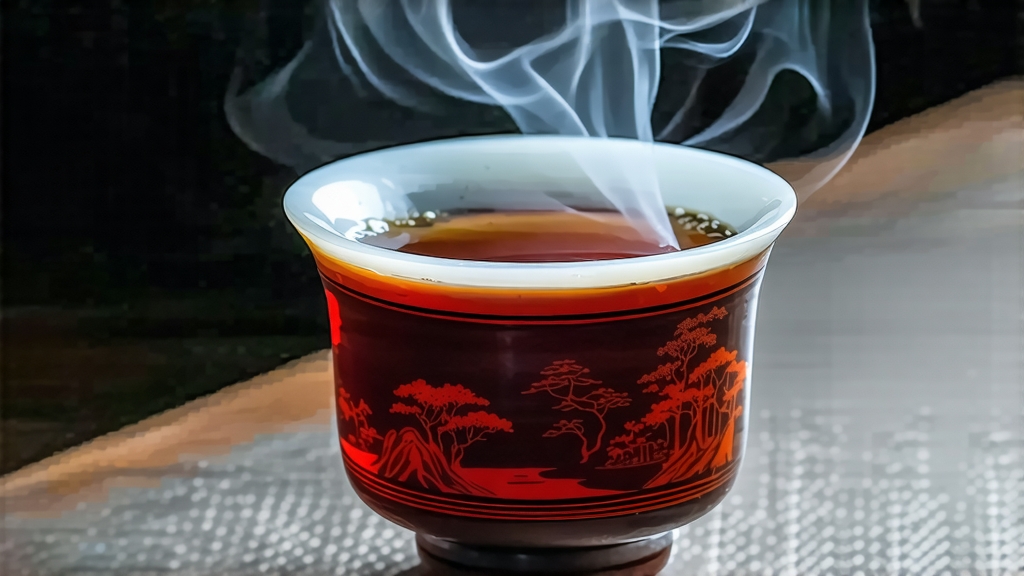
Long before English breakfast blends and Assam CTC filled supermarket shelves, a small village in the Wuyi Mountains of northern Fujian province sent Europe its first taste of what the Chinese still call hong cha—“red tea.” That village was Tongmu, the year was roughly 1646, and the tea was Lapsang Souchong. Today its name evokes either devotion or bewilderment: some drinkers swoon over its campfire perfume, others swear it smells like smoked ham. Both camps are right, yet neither captures the full story of a tea that changed world history, gave birth to every black tea that followed, and—when handled by a master—can taste as elegant as Burgundy and as comforting as winter hearth.
History: From Ming Loyalists to London Coffeehouses
Tongmu sits in a narrow gorge where the Chong’an River becomes a torrent and the humid subtropical air collides with cool mountain mist. In the chaotic final years of the Ming dynasty, Qing troops pushed southward; legend claims that passing soldiers commandeered a tea factory, forcing leaf processors to abandon their usual green-tea schedule. To save the harvest, workers rushed the withering leaves over open pine fires, then packed them in gunny sacks for swift evacuation downriver to the port of Xiamen. Dutch traders tasted the result—brisk, copper-liquored, and astonishingly stable after months at sea—and re-labelled it “Bohea,” a corruption of “Wuyi.” By 1669 the British East India Company had listed “Lapsang Souchong” (the Cantonese reading of the village name) at 28 shillings a pound, more than twice the price of green tea. Samuel Pepys mentions drinking “a cup of tee, a China drink,” in 1660; within decades London coffeehouses were advertising “Souchong” as the gentleman’s beverage, the first black tea Europeans ever tasted.
Terroir: Why Only Tongmu Tastes Like Tongmu
The Wuyi range is a UNESCO biosphere reserve built on weathered volcanic tuff. Its narrow gorges trap morning fog, creating 80–85 % relative humidity, while giant pine and cedar give off resin that settles on tea bushes. The indigenous cultivar is Xiao Zhong qi zhong (“small cultivar, original bush”), a semi-wild shrub with tiny spring buds that yield high concentrations of geraniol and linalool—aromatic compounds that marry with pine smoke to produce the tea’s signature peach-and-turpentine top note. Outside Tongmu, farmers may imitate the process, but without that resin-laden air and mineral soil the cup lacks the lingering honey finish Chinese tasters call “cold rock candy sweetness.”
Grades: Souchong, Congou, and the Modern “Unsmoked”
Traditional Lapsang Souchong is sorted into four leaf grades:
- Leaf-grade Souchong—whole two-leaf-and-a-bud sets, lightly twisted; the most balanced smoke.
- Broken Souchong—smaller particles intended for Russian samovars; heavier smoke to mask astringency.
- Congou (gongfu) Souchong—larger, strip-style leaves processed with extra rolling; designed for European gongfu-style teapots of the 18th century.
- Pinewood Unsmoked—an innovation requested by German importers in 2005: same withering and firing, but no final pinewood smoke. It delivers cocoa and dried-longan notes, proving that Tongmu terroir alone is charismatic.
Craft: The Eight Steps That Turn Green Leaf into Scarlet Ribbon
- Plucking: Dawn pickings before the sun burns off dew, selecting only the first three leaves.
- Indoor Withering: 8–10 h on bamboo racks above a gentle pine-charcoal brazier; temperature held at 28 °C to drive off 60 % moisture while infusing the leaf with resinous air.
- Rolling: Once leaves feel leather-tough, they are rolled for 45 min to rupture cells, releasing catechins that will oxidize into theaflavins and thearubigins.
- Oxidation: Rolled leaf is piled in cedar-wood trays inside a humid “fermentation room” for 3–5 h; color shifts from jade to copper.
- First Firing: Hot wok at 220 °C for